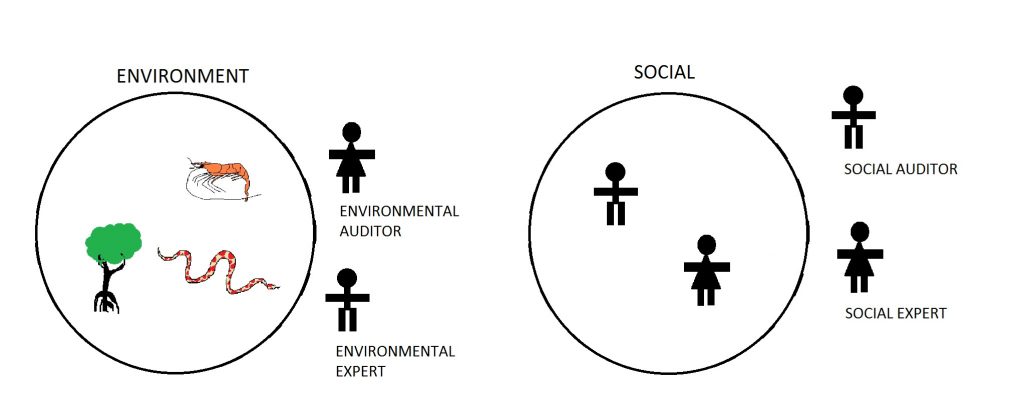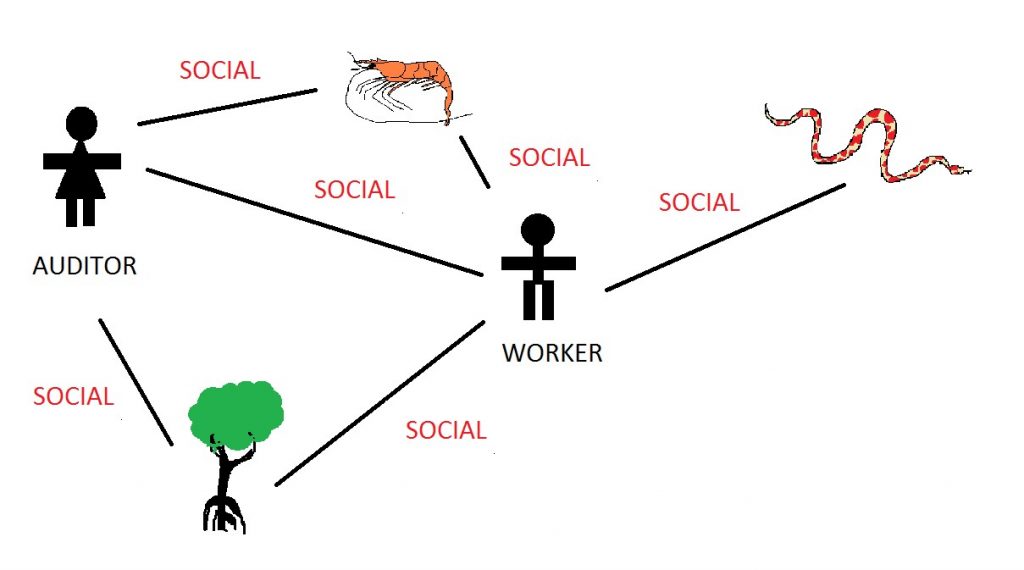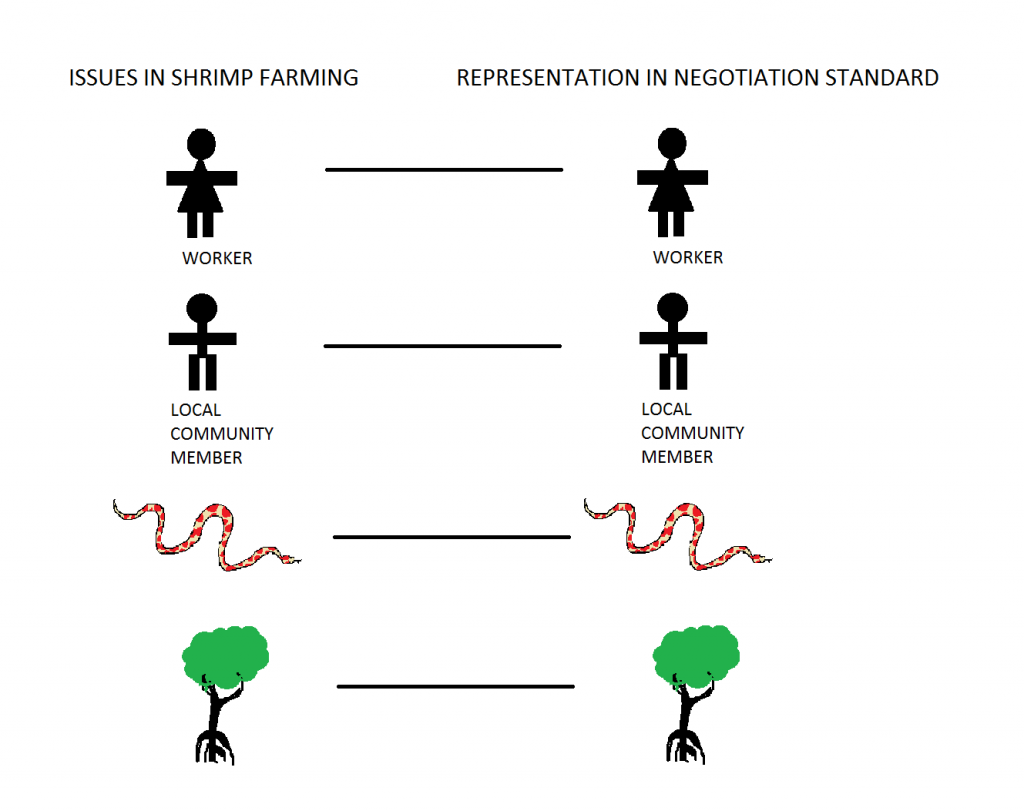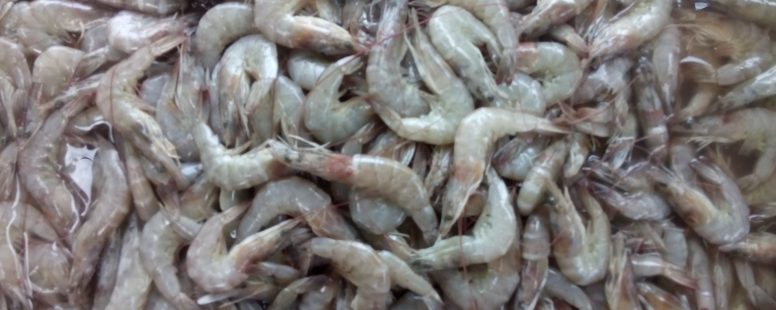Seafood Certification and ‘the social’
In 2014, an investigation from The Guardian revealed that the global shrimp supply chain was linked to Thai ‘ghost ships’ that, to quote, ‘enslaved and even killed workers’. The fish caught on these ‘ghost ships’ was used as food in shrimp farms, the product of which was sold to supermarkets in the US and in Europe.
This scandal and its follow-up investigations influenced the seafood sector. Several initiatives and meetings took place on how to improve social issues in the sector. For example, a joint conference of UNEP, Oxfam and the Sustainable Fisheries Partnership was organised concerning social development in the seafood industry in Annapolis in the USA in 2015. At the Seafood Summit in Malta in 2016 a workshop was held on the topic of Social Responsibility in Seafood, with the aim to propose ways of addressing ethical issues in the industry. These examples show that there is momentum in the seafood sector to discuss and address social issues.
But what is meant by social issues? Are they related to labour, human trafficking, land rights or a fair price? When I conducted research for my Master’s thesis on the Aquaculture[1] Stewardship Council’s (ASC) Standard on Responsible Shrimp Farming, I found that the category ‘social’ is interpreted differently by different people. This blog elaborates on these different ways to think about ‘social’. The aim is to give an overview of these different interpretations. First I will shortly explain what third-party certification is, after which I will discuss the interpretations of ‘the social’.
Third-Party Certification
Third-party certification (sometimes referred to as sustainability certification) evolves around three parties. The first party is a producer (for example a shrimp farmer) who has to abide by the rules set out by a second party. Typically the second party is a round table consisting of non-state actors that through a negotiation process decide what practices or indicators are sustainable. The third party (an auditing company) assesses if the first party (the shrimp farmer) complies with the rules set out by the second party (a round table). When a producer complies with the standard, the product attains a certificate. A consumer can easily recognise such products. The intention is that a market-shift would then occur towards the certified product because consumers move the industry towards more sustainable practices.
In the next section I will explain how ‘the social’ is interpreted differently. I encountered these different interpretations during my fieldwork and/or in literature I used for my thesis. The first three ways of thinking about ‘the social’ have to do with the relation of social to environmental: are social and environmental essentially different; is ‘the social’ embedded in the environment; or is this the other way around? The last three interpretations discuss the content: is social related to democracy and participation; to economic issues or to human rights? Every interpretation of ‘the social’ is firstly explained, then the relation to third-party certification is given and finally a critique of this interpretation is discussed.
Social is not Environmental
The first interpretation of ‘the social’ is that it is essentially different from the environment. Simply put: environmental issues address trees, plants and animals and social issues address people. In the ASC Standard, for example, a difference is made between environmental principles (i.e. biodiversity, shrimp health and welfare, stock and resource management) and social principles (labour rights, community relations). This interpretation is related to the idea that a different expertise or skill set is needed to evaluate either environmental or social issues. In the ASC Standard the different principles are assessed through different experts: a biodiversity expert assesses biodiversity, and a social expert assesses the social impact, and different auditors: the environmental auditor examines these principles while the social auditor examines the social principles. Figure 1 represents this interpretation of ‘the social’.

Figure 1: Social is not Environmental
In this interpretation of ‘the social’, social issues are thought to be resolved through third-party certification. As long as a social auditor has the right skill set, he or she can assess this social domain. The auditor or expert is thought to be external to the thing she measures and she is replaceable by another auditor. Hence, both the auditor and the measurements are thought to be objective.
Because two experts are needed, the costs for certification are higher. Another critique of this interpretation of ‘the social’ relates to the objective position of the auditor. Is an auditor independent if his income relies on having as many farms certified as possible? And how objective are social and environmental measurements: do you assess salinization levels in the rainy season when a particular part of land is overflown by the river, or in the dry season? And how do you measure if a neighbour has a complaint on the practices of the farmer?
Social is part of the environment
The second interpretation of ‘the social’ is that it is part of the environment. This interpretation regards people as part of the world they live in, humans are hence part of their environment. This leads to the idea that environmental issues have social consequences and by addressing environmental issues, social issues are also resolved. An example from shrimp farming is that when a farmer makes sure that neighbouring lands are not salinized, neighbouring communities will also not complain. Figure 2 shows this interpretation of the social.

Figure 2: Social is part of the environment
In third-party certification this could mean that an environmental auditor alone can address the issues. She can take measurements and thereby also resolve social issues. The costs of certification would then be lower, since only one auditor is needed.
However, this stance still relies on an independent and objective auditor that is considered to be outside of the thing she measures. But can an environmental auditor or expert measure all issues?
Social is relational
This interpretation sees ‘the social’ as something that is relational. In this viewpoint it is not the thing that is social or not (because it is a tree or a human being) but the interaction between two things is social. Hence, a human is not something social but relations are. Animals can also perform social behaviour for example. This implies a ‘flat’ way of seeing things. Figure 3 shows this interpretation of ‘the social’:

Figure 3: Social is Relational
This interpretation of ‘the social’ places an auditor within the objects it studies. The relation the auditor has to a farmer or a worker is also social. Or the way a worker engages with an endangered species on the farm would also be a social phenomenon that should be described. Also the relation between an environmental auditor and his measuring equipment is considered something social. This interpretation would therefore study networks and interactions.
This way of thinking of ‘the social’ assumes that everything is a social issue, and that environmental measurements are not necessary anymore. Nevertheless, it might not offer a solution to social problems. Seeing ‘the social’ as something relational would lead to descriptions of practices, which are an end-goal in itself. Policy measures might result from these descriptions.
After explaining three ways of considering social in relation to environmental, there are three ways of defining the content of ‘the social’.
Democracy is social
This interpretation of ‘the social’ defines social as democratic processes. The idea is that participation and democratic processes lead to more inclusive practices because the voices of the ones who are influenced by shrimp farming are then heard. If everyone is involved, the issues among people are consequently being resolved, and the voiceless then have a voice in the standard-setting process.

Figure 4: Social is Democracy
This interpretation does not only consider the third party in third-party certification, but considers the second party as well. The implementation of a standard is compared with the standard setting process. The issues addressed in the standard should be articulated in the standard-setting process. In the case of the ASC shrimp standard, this present interpretation of the social, would criticise the standard-setting process for not including those communities that are impacted by shrimp farming in the standard-setting process.
The difficult point of this position concerns representation. Who is able to represent local communities for example? And can you generalise the context of a negotiation table into worldwide shrimp farming? Or should a system with regional negotiations take place?
Economic issues are social
This interpretation of ‘the social’ also includes economic issues within the social domain. Things such as the salary of a farmer or her contract with a processing plant are also part of the social domain. It is related to the three pillars of sustainable development, where there is overlap between social, environmental and economic issues.

Figure 5: Economic issues are also part of social
People who define social in this way, say that third-party certification itself can have a negative social effect. A standard might have the result that only large-scale producers are able to become certified, and that small-scale producers are therefore pushed out of the market. Or that farmers are forced by processing plants and retailers to participate in the scheme, although they do not necessarily receive the benefits of certification. Certification is hence criticised for not taking socio-economic circumstances into account. A way to improve standards is by making possible group certification so the cost of certification is reduced, or by having a premium price that goes directly to the farmer. Another way of tackling these social issues is by looking at the whole value chain, including processing plants and retailers and seeing where the benefits of certification go to, instead of isolating the farmer as the one being responsible for certification.
A critique of this latter interpretation of ‘the social’ consists of the idea that certain players need to be pushed out of the market because their practices are not sustainable. In the end large-scale farmers are more efficient and the people not being able to become certified are not economically sustainable. The non-certified should move to another sector or sell their products to a local market with lower standards.
Rights are social
This definition of social is related to rights. Land rights and human rights are part of ‘the social’ and ‘the social’ is therefore also a legal domain. Things such as human trafficking or the appropriation of land are examples of rights being violated in shrimp farming practices. The problems have to do with weak laws or enforcement of laws.

Figure 6: Rights are social
Persons who define social issues as rights would say that certification does not address these issues. Social issues also have to do with institutions, governments and for example labour unions, or with discrimination among minority groups and these issues are difficult to measure. The social domain is thus bigger than what third-party certification can capture, as is shown in figure six. Therefore, third-party certification cannot by its own tackle social issues, but governments have to be involved.
A criticism of this interpretation is that the issues are too complex to be resolved and that governments in developing countries do not have the capacity or the will to tackle these issues. If NGOs or the private industry are involved in tackling rights, they might violate the sovereignly of nations.
Conclusion
These interpretations of ‘the social’ might help to broaden the ideas on what social issues within the seafood industry are and how to deal with them. I believe that understanding that there are different interpretations of ‘the social’ leads to a better understanding of how to propose solutions to tackle social issues.
[1] The seafood industry can be roughly separated into wild-caught fish (captured fisheries) and farmed fish (aquaculture). At the moment aquaculture provides for roughly half of the global seafood supply, and around 88 percent of the global aquaculture by volume is produced in Asia (FAO, 2014). Aquaculture can be practiced at sea or in lakes with cages, or on land in ponds. The species of shrimp that make up for most of the commercially traded shrimp are salt or brackish water shrimp.

